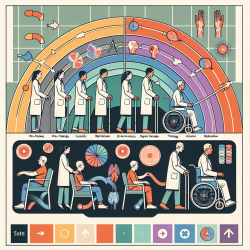Introduction
Depressive symptoms among adolescents have been on the rise since 2010, with significant implications for mental health in young adulthood. A recent study published in JAMA Network Open by Keyes et al. (2024) explores the persistence of these symptoms from adolescence into young adulthood. This blog aims to help practitioners improve their skills by implementing the outcomes of this research or by encouraging further exploration.
Understanding the Research
The study analyzed data from the Monitoring the Future longitudinal survey, covering birth cohorts from 1972 to 2001. It found that depressive symptoms at age 18 are strongly associated with symptoms at ages 19-22, regardless of birth cohort. This persistence suggests that early intervention is crucial in mitigating the long-term impact of adolescent depression.
Key Findings
- Depressive symptoms in adolescence persist into young adulthood, with a higher prevalence in recent cohorts.
- The association between adolescent and young adult depressive symptoms does not vary by birth cohort.
- Females are particularly affected, with a significant portion of young adult symptoms linked to adolescent experiences.
Implications for Practitioners
Practitioners should focus on primary prevention and early intervention strategies. Here are some recommendations:
- Implement School-Based Programs: Schools can serve as a critical platform for mental health interventions. Programs that teach coping strategies and resilience can be beneficial.
- Enhance Access to Mental Health Resources: Increasing the availability of mental health professionals in schools and communities can help address the growing need for support.
- Focus on Family Involvement: Engaging families in mental health education can improve outcomes by creating supportive home environments.
Encouraging Further Research
While the study provides valuable insights, further research is needed to explore the underlying causes of increasing depressive symptoms and to develop targeted interventions. Practitioners are encouraged to collaborate with researchers to identify effective strategies for prevention and treatment.
Conclusion
The persistence of depressive symptoms from adolescence into young adulthood highlights the need for proactive measures in mental health care. By implementing early intervention strategies and continuing research, practitioners can play a vital role in addressing this public health challenge.
To read the original research paper, please follow this link: Depressive Symptoms in Adolescence and Young Adulthood.










